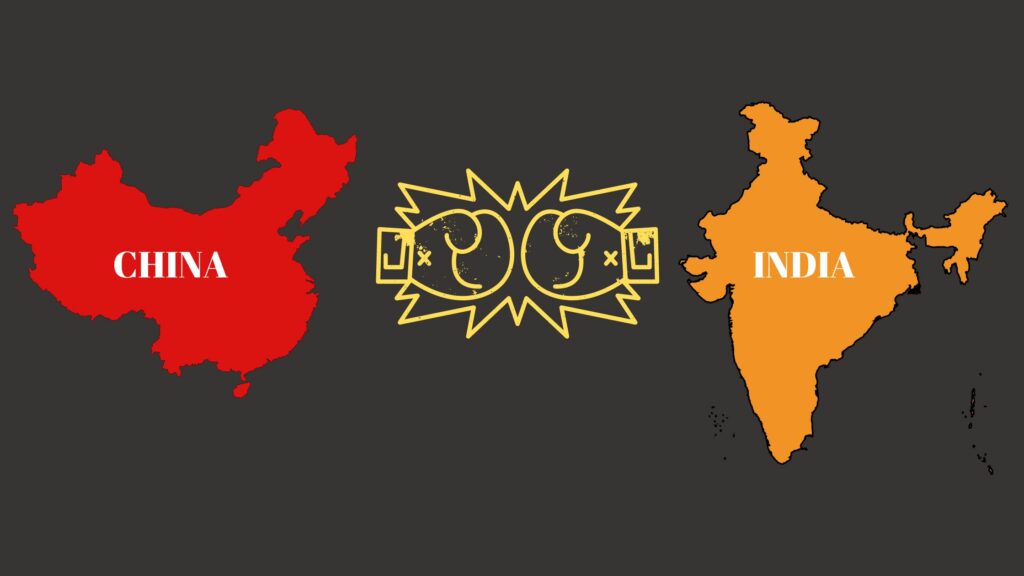Key Takeaways:
- India-China relations have remained strained since the 1950s
- Under PM Narendra Modi, India has become more aggressive and assertive in Southeast Asia
- The move aims to counter China’s growing influence and hegemony in the region

YEREVAN (CoinChapter.com) —India is embarking on significant endeavors to expand its influence across Southeast Asia. The strategic move is aimed at countering China’s prevailing dominance in the region, according to a recent report by CNBC.
Relations between the two Asian economic and military giants have been strained for decades. India was the first non-socialist country to recognize the People’s Republic of China in the early 1950s. However, since then, China has raised territorial claims over its neighbor.
According to official Delhi, Beijing continues to illegally occupy thousands of kilometers of Indian land. Despite this, India’s policy towards China has traditionally been rather mild.
With expectations of finding cooperation with Beijing, New Delhi has refrained from asserting itself in areas traditionally seen as China’s zone of influence. However, analysts now argue that India’s patience has run out.
“India certainly is becoming more ambitious in Southeast Asia. There is no doubt about it. I think the understanding in New Delhi had been: Let’s not wade into waters where China might be more uncomfortable,”
Harsh V. Pant, Vice President for Studies and Foreign Policy at the Observer Research Foundation (ORF), a New Delhi-based think tank, told CNBC.
The recent border clashes, which left 20 Indian soldiers dead, have served as the final nail in the coffin. As a result, India is now pushing back aggressively.
This shift is accompanied by heightened assertiveness and transparency in its connections with Southeast Asia. The intensifying competition between India and China has cast a notable impact on New Delhi’s strategic considerations as it seeks to bolster its footprint in the area.
How does Southeast Asia come into play in India-China relations?
After prolonged anticipation, India is finally emerging as a strategic player in Southeast Asia. The region is composed of eleven countries: Brunei, Myanmar, Cambodia, Timor-Leste, Indonesia, Laos, Malaysia, the Philippines, Singapore, Thailand, and Vietnam.
China’s dominance in Southeast Asia has become a problem for many of these nations. In many cases, their relations with Beijing have become strained over various issues challenging their economic prospects. As a result, they have looked towards India to balance the scales.
Amidst a flurry of diplomatic activities in the region, Delhi has made its presents felt. It has successfully finalized an arms agreement with Vietnam and supported the Philippines in sovereignty disputes against China in the South China Sea. Moreover, the Indian Government has strengthened defense collaboration with Indonesia, a move that hasn’t gone down well with Beijing.
Communist China asserts its ownership over nearly the entire South China Sea. However, Malaysia, Vietnam, Brunei, and the Philippines, reject this claim. All of these nations have competing territorial claims over the resource-abundant region.
From ‘Look East” to “Act East” – Inda’s Foreign Policy
India’s plans with the region are not new. It started back in 1991 when official Delhi announced its “Look East Policy”. The strategy was aimed at engaging with the region, keeping India’s security concerns in mind.
Evolving beyond a mere collection of strategies, the Act East policy came to succeed the Look East policy in 2014. Under Prime Minister Narendra Modi, India embarked on proactive involvement with the region. This approach came to thwart any attempts of the area falling under complete Chinese dominance.
India’s growing influence also comes to compliment US engagement in the region. Washington’s partnership in China’s neighborhood, along with a more aggressive foreign policy coming out of New Delhi, is trouble for Beijing.
India’s Foreign Minister Subrahmanyam Jaishankar has on several occasions pointed out China’s aggression as a hindrance to peace.
Speaking at the 6th Indian Ocean Conference in Dhaka, Bangladesh, in May 2023, he subtly accused China of breaching international agreements.
The following month, the Indian Foreign Minister slammed Beijing for violating its agreements with Delhi.
“The present downturn in our ties was not our creation…It was created by China violating two agreements… of 1993 and 1996 and moving forces to the Line of Actual Control (LAC) in violation of those agreements. Now, if we are to have a decent relationship, I think…they need to observe those agreements, they need to stop trying to unilaterally change the status quo,”
he said at the ‘Syama Prasad Lecture, New India and The World’ in Kolkata.
As India continues to flex its muscles, the countries in China’s neighborhood look at it for leadership. A strong New Delhi gives the Southeast Asian nations insurance, or a hedge against Beijing.


